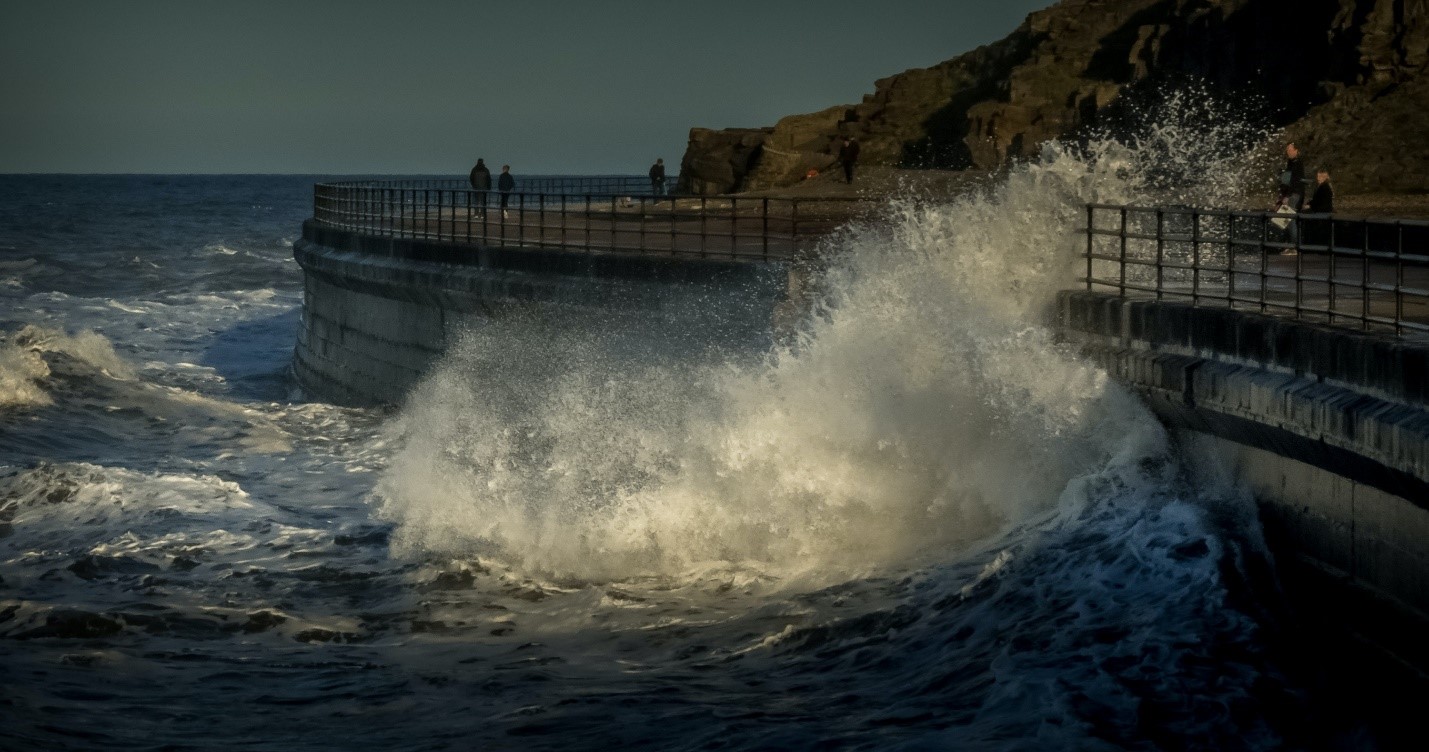As global warming continues to rage largely unchecked by the industrialized first world, many solutions developed to address dangerous problems are becoming inadequate. An obvious and harrowing example of this comes from rising sea levels. As the temperature rises, sheets of arctic ice are breaking away and melting, dumping millions of tons of newly liquidated water into the oceans. We are very probably past the point of no return, and as you can see here there is probably nothing humanity can do to reverse the damage we’ve done to the climate. We missed our window to prevent the worst of it, and now the world is going to have to brace for impact as things change.
Rising sea levels are going to be a major problem for a lot of areas of life. One of the most overlooked problems is the increase of damage to sea walls, the structures that help protect shorelines and coastal cities from the ocean. Sea walls are a vital part of coastal infrastructure, and they’re designed to allow life to go on as usual without the risk of regular tidal forces or waves interfering and causing damage. As you might imagine, rising water levels mean more wear and tear on those defenses, and experts are warning that this will increase the cost of building and maintaining them over the next decade. Here’s what you need to know about these changes.
What to Expect
Fortunately, the issue here isn’t that coastal defenses are going extinct, or that they’re going to be destroyed. The rising water levels are gradual, albeit accelerating, but the expected rise isn’t enough to completely invalidate most walls, generally, the bigger ones will survive. You can see at https://oceanservice.noaa.gov/hazards/sealevelrise/sealevelrise-tech-report.html. The keyword is most; while municipal and city coastal walls are going to generally be fine (albeit more expensive to repair and maintain), the same can’t be said for private ones. These are the sea walls that people use at their homes or businesses, or on smaller marinas and docks. The rule of thumb to keep in mind is that cities and towns are going to be okay, private residences and businesses are going to potentially see some trouble.
The reason for this is the amount of resources required to maintain the defensive structures. While cities and towns have more money and manpower to put into it, private citizens and businesses might not have that kind of power to manage ongoing problems. You may think that rising costs will be worse for the larger structures and therefore will require more money, comparatively the sting will be more keenly felt by smaller entities. The main problem is that when the costs rise in the future, your average person is going to have less of a chance of weathering those costs than larger organizations (like entire city governments) who have exponentially more resources to spend.
What Can I Do?

On the topic of global warming, there’s not much an individual can do. Reducing your carbon footprint is admirable, but the real problem is the corporations that contribute to an overwhelming portion of greenhouse gasses. That said, if you have a home or business that relies on a sea wall to prevent damage from rising waters, your absolute smartest bet is not to wait. The cost of your defenses are going to increase steadily as the damage to them increases, so you need to think about preventative measures. A good Sea Wall Construction company can consult you about your needs and develop a game plan for moving forward. The earlier you act, the less you’ll spend in the long run.
The grim realities of climate change require a shift in thought. We’re past preventing disaster; now, there is only to weather it. Vital infrastructure will need to be rethought, and on a personal level that can be daunting. Unfortunately, things are only set to get worse ongoing. There is one silver lining to this mushroom cloud. You can take a vital lesson from the failure of humanity’s handling of climate change: the earlier you act, the more damage you’ll prevent in the future.

